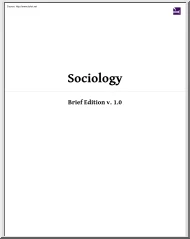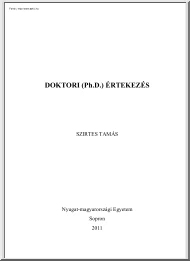Datasheet
Year, pagecount:2001, 2 page(s)
Language:English
Downloads:2
Uploaded:June 26, 2023
Size:454 KB
Institution:
[USC] University of Southern California
Comments:
Attachment:-
Download in PDF:Please log in!
Comments
No comments yet. You can be the first!Content extract
Source: http://www.doksinet Tanaka v. University of Southern California, et al 252 F.3d 1059 (9th Cir 2001) Authored by Brandi Bennett In 1994, Rhiannon Tanaka signed a letter of intent to play soccer and attend classes at the University of Southern California (USC). USC is a member of the Pacific 10 Athletic Conference. Following her freshman year, Tanaka decided to transfer to the University of California, Los Angeles (UCLA) because of dissatisfaction with the women’s soccer program and the quality of her education. Tanaka claimed that USC arranged for athletes to receive fraudulent academic credit through sham classes. USC opposed Tanaka’s transfer to UCLA, another Pac-10 member and sought sanctions against her under the Pac-10’s intra-conference transfer rule that would have enjoined her from participating in collegiate athletics for a year and required her to sacrifice one of her four years of athletic eligibility. Tanaka subsequently filed this suit for antitrust
violations under section 1 of the Sherman Act. The district court dismissed Tanaka’s suit with prejudice and she appealed. Section one of the Sherman Act provides that every contract in restraint of trade or commerce among the States is illegal. In order to prevail on a claim under section one, a plaintiff must show that there was (1) a contract, combination or conspiracy; (2) that the agreement unreasonably restrained trade under either a per se rule of illegality or a rule of reason analysis; and (3) that the restraint affected interstate commerce. Tanaka alleged that the Pac-10’s transfer rule was illegal because it violated the rule of reason. A restraint on trade violates the rule of reason if the harm to the competition outweighs its procompetitive benefits. The plaintiff bears an initial burden to show that the restraint poses significant anticompetitive effects within a relevant market. Failure to identify a relevant market is proper grounds for dismissal of a Sherman Act
claim. Tanaka alleged that the relevant market was Los Angeles and the women’s soccer program at UCLA. However, the court holds that the relevant market was national in scope because Tanaka was recruited by schools from around the country and only personal preference kept her in the Los Angeles area where her family lived. Moreover, the court held that Tanaka failed to identify a properly defined product market; the UCLA women’s soccer program is not unique and is interchangeable with any other program in the country for antitrust purposes because an individual soccer program’s existence is predicated on competition in the field of intercollegiate athletics and, thus, each program is interchangeable. Finally, Tanaka’s claim alleged that USC’s invocation of the transfer rule sanctions against her was an isolated act of retaliation so they could control her testimony regarding the alleged academic fraud. The court held that Tanaka is alleging a personal injury and not an injury
to a definable market. According to the court, antitrust laws are invoked to protect competition, not individuals who suffer personal injuries. Thus, the Court of Appeals dismissed her case for failure to allege an injury to competition. The Court of Appeals’ refusal to strike down the Pac-10’s intra-conference transfer rule under the Sherman Act legitimizes the use of intra-conference transfer rules in Source: http://www.doksinet intercollegiate athletics to restrict the free movement of collegiate athletes from one program to another
violations under section 1 of the Sherman Act. The district court dismissed Tanaka’s suit with prejudice and she appealed. Section one of the Sherman Act provides that every contract in restraint of trade or commerce among the States is illegal. In order to prevail on a claim under section one, a plaintiff must show that there was (1) a contract, combination or conspiracy; (2) that the agreement unreasonably restrained trade under either a per se rule of illegality or a rule of reason analysis; and (3) that the restraint affected interstate commerce. Tanaka alleged that the Pac-10’s transfer rule was illegal because it violated the rule of reason. A restraint on trade violates the rule of reason if the harm to the competition outweighs its procompetitive benefits. The plaintiff bears an initial burden to show that the restraint poses significant anticompetitive effects within a relevant market. Failure to identify a relevant market is proper grounds for dismissal of a Sherman Act
claim. Tanaka alleged that the relevant market was Los Angeles and the women’s soccer program at UCLA. However, the court holds that the relevant market was national in scope because Tanaka was recruited by schools from around the country and only personal preference kept her in the Los Angeles area where her family lived. Moreover, the court held that Tanaka failed to identify a properly defined product market; the UCLA women’s soccer program is not unique and is interchangeable with any other program in the country for antitrust purposes because an individual soccer program’s existence is predicated on competition in the field of intercollegiate athletics and, thus, each program is interchangeable. Finally, Tanaka’s claim alleged that USC’s invocation of the transfer rule sanctions against her was an isolated act of retaliation so they could control her testimony regarding the alleged academic fraud. The court held that Tanaka is alleging a personal injury and not an injury
to a definable market. According to the court, antitrust laws are invoked to protect competition, not individuals who suffer personal injuries. Thus, the Court of Appeals dismissed her case for failure to allege an injury to competition. The Court of Appeals’ refusal to strike down the Pac-10’s intra-conference transfer rule under the Sherman Act legitimizes the use of intra-conference transfer rules in Source: http://www.doksinet intercollegiate athletics to restrict the free movement of collegiate athletes from one program to another





